Tucson Mountain Retreat by DUST
This holiday house with rammed earth walls by US architects DUST is nestled amongst the rocky outcrops and sprouting cacti of the Sonoran Desert in Arizona (+ slideshow).
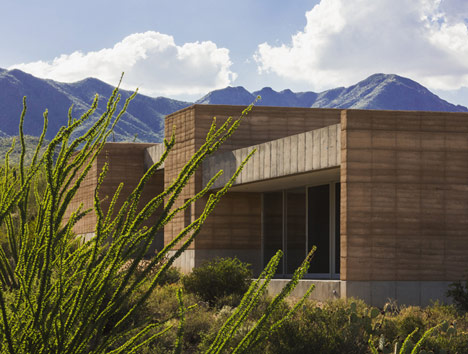
With a long narrow body that ambles gently across the terrain, the Tucson Mountain Retreat is a single-storey residence with terraces along its north and south elevations and a small deck upon its roof.
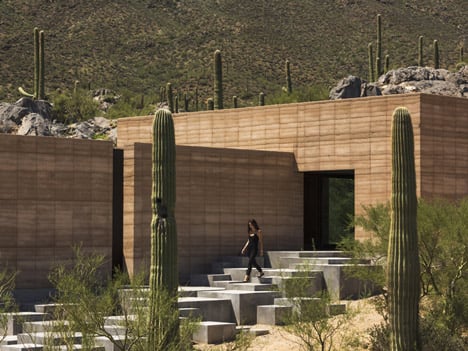
DUST architects Cade Hayes and Jesus Robles planned a location away from animal migration paths and overexposure to sunlight and wind, then used local soil to build the house's red earth walls.
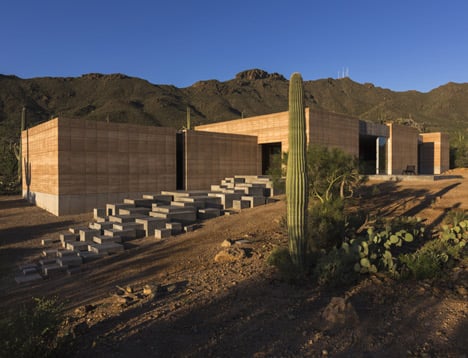
"Great effort was invested to minimise the physical impact of the home in such a fragile environment, while at the same time attempting to create a place that would serve as a backdrop to life and strengthen the sacred connections to the awe-inspiring mystical landscape," explains Hayes.
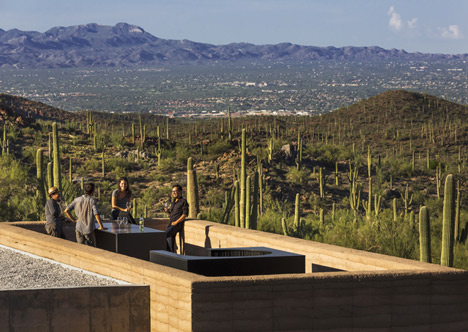
The rooms of the house are separated into three zones, comprising a sleeping and bathing area, a central living room and a music studio. Residents have to leave the building to move between zones, intended to provide acoustic separation.
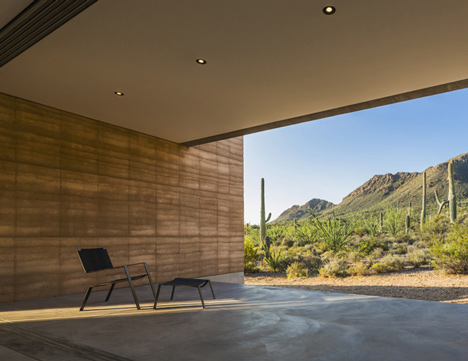
The living room features glazed walls on both sides, which slide open to enable cross ventilation. The music room opens out to a north-facing deck, while the two bedrooms have a terrace along their southern edge and feature a chunky concrete canopy to shelter them from harsh midday sun.
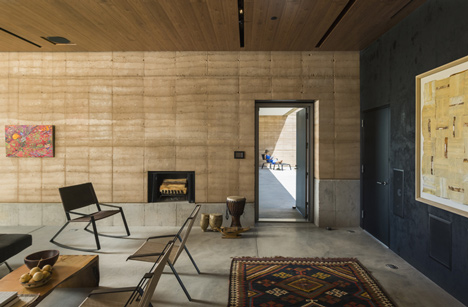
A spiralling metal staircase leads up to the roof, offering residents a wide-stretching view of the surrounding desert landscape.
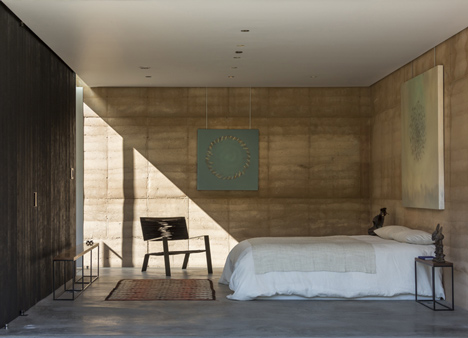
The house produces all its own water using a large rainwater harvesting system that filters the liquid until it is clean enough to drink.
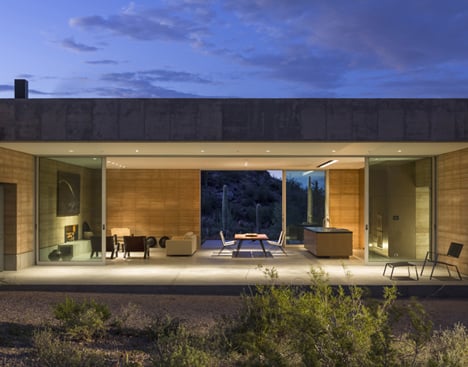
There's also a small car parking area a short distance away and it can be accessed via a narrow footpath.
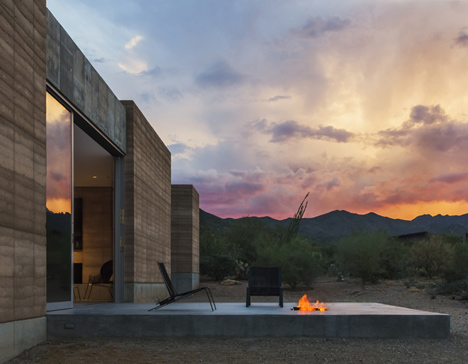
Another project we've featured from the Arizona deserts is a cast concrete house that is sunken into the ground. We've also published a cabin built by students in the Utah desert. See more houses in the US.
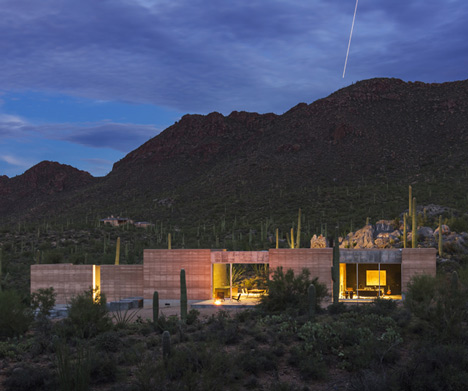
See more architecture using rammed earth, including a research complex in India.
Photography is by Jeff Goldberg/ESTO.
Here's a project description from DUST:
The Tucson Mountain Retreat is located within the Sonoran Desert; an extremely lush, exposed, arid expanse of land that emits a sense of stillness and permanency, and holds mysteries of magical proportions. The home is carefully sited in response to the adjacent arroyos, rock out-croppings, ancient cacti, animal migration paths, air movement, sun exposure and views. Great effort was invested to minimise the physical impact of the home in such a fragile environment, while at the same time attempting to create a place that would serve as a backdrop to life and strengthen the sacred connections to the awe-inspiring mystical landscape.
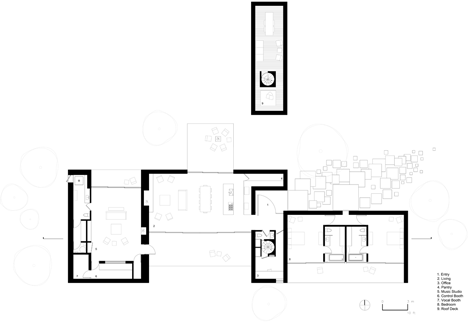
Intentionally isolating the parking over 400 feet from the house, one must traverse and engage the desert by walking along a narrow footpath toward the house, passing through a dense clustered area of cacti and Palo Verde that obscure direct views of the home. Upon each progressive footstep, the house slowly reveals itself, rising out of the ground. The entry sequence, a series of playfully engaging concrete steps, dissolves into the desert. As one ascends, each step offers an alternative decision and a new adventure. Through this process, movement slows and senses are stimulated, leaving the rush of city life behind.
The home is primarily made of rammed earth, a material that uses widely available soil, provides desirable thermal mass and has virtually no adverse environmental side effects. Historically vernacular to arid regions, it fits well within the Sonoran Desert, while at the same time it embodies inherent poetic qualities that engage the visual, tactile and auditory senses of all who experience it.
The program of the home is divided into three distinct and isolated zones; living, sleeping, and music recording/home entertainment. Each zone must be accessed by leaving the occupied zone, stepping outside, and entering a different space. This separation resolves the clients' desired acoustic separation while at the same time, offers a unique opportunity to continuously experience the raw desert landscape.

Rooted in the desert, where water is always scarce, the design incorporates a generous 30,000 gallon rainwater harvesting system with an advanced filtration system that makes our most precious resource available for all household uses.
Solar heat gain is reduced by orienting the house in a linear fashion along an east–west axis, and by minimising door and window openings in the narrow east and west facades. The main living and the sleeping spaces extend into patios and open toward the south under deep overhangs that allow unadulterated views and access to the Sonoran Desert. The overhangs provide shelter from the summer sun while allowing winter sunlight to enter and passively heat the floors and walls. They also scoop prevailing southerly breezes and enhance cross ventilation, which can be flexibly controlled by adjusting the floor-to-ceiling sliding glass doors. When the large glass doors are fully opened, the house is transformed, evoking a boundless ramada-like spirit where the desert and home become one.